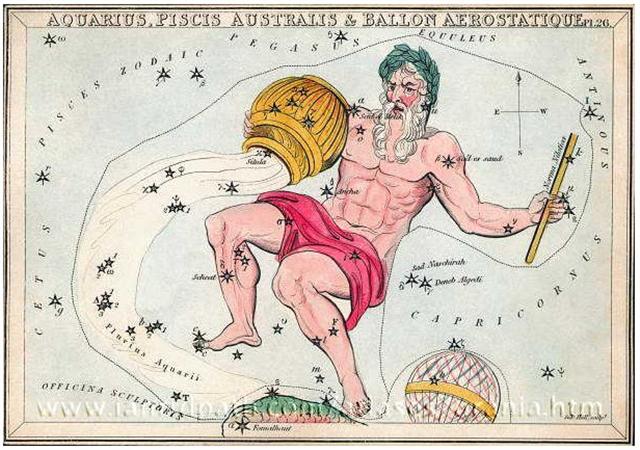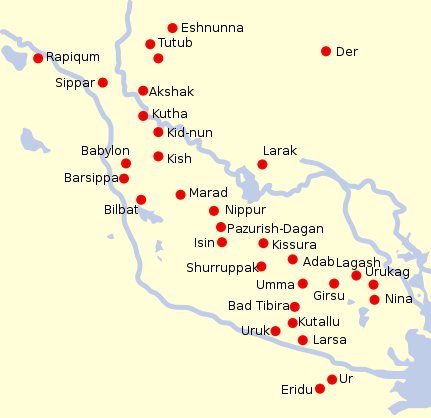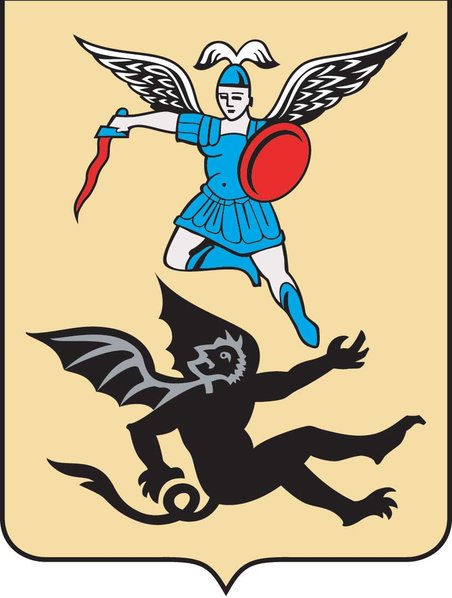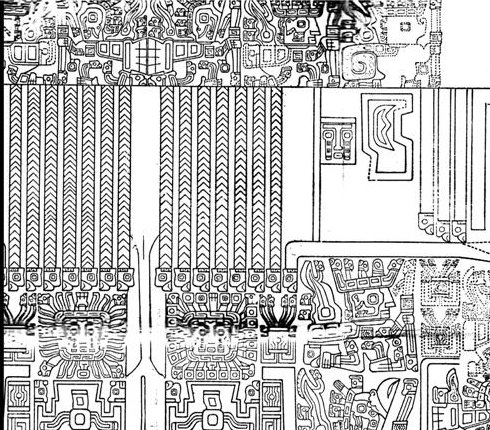But there is also evidence that the end of the year was
where the month of Janus (January) ended.

In Roman times - when
the correlations between the yearly cycle of the Sun and the
corresponding cycle of the Moon once again had been set in order -
the Sun reached 'January 28 when Procyon culminated (at 21h).
|
Dec |
29 |
31 |
+2 |
|
Ianuarius |
29 |
31 |
+2 |
|
Februarius |
28 |
28 |
- |
According
to the C text this was where the so-called Moon calendar was beginning:
|
tagata oho rima - ki te
marama |
koia kua oho |
ki te marama |
kua moe |
 |
 |
 |
 |
|
Ca6-17
(157 = 314 / 2) |
Ca6-18 |
Ca6-19 |
Ca6-20 |
|
CLOSE TO THE SUN: |
|
Febr
24 (420 = 7 * 60) |
25 |
26 |
27
(58 = 2 * 29) |
|
... The leap day was introduced as part of the
Julian reform. The day following the Terminalia
(February 23) was doubled, forming the 'bis
sextum - literally 'double sixth', since
February 24 was 'the sixth day before the
Kalends of March' using Roman inclusive counting
(March 1 was the 'first day'). Although
exceptions exist, the first day of the bis
sextum (February 24) was usually regarded as
the intercalated or 'bissextile' day since the
third century. February 29 came to be regarded
as the leap day when the Roman system of
numbering days was replaced by sequential
numbering in the late Middle Ages ... |
|
δ Tucanae (340.1), ρ Cephei (340.2), ν Gruis
(340.3), ζ Aquarii, δ Gruis (340.4), 5/1100 Lac.
(340.7), σ Aquarii, 6/650 Lac. (340.9)
*299.0 = *340.4 - *41.4
PROCYON (α Canis Minoris) |
υ Oct. (341.0), α/91 Lac. (341.1),
HOMAN (Hero) = ζ Pegasi,
β Piscis Austrini (341.2), ν Tucanae (341.5), υ
Aquarii (341.9) |
η Aquarii (342.1), σ Gruis (342.4),
SITULA (Water-jar) = κ Aquarii (342.7)
*301.0 = *342.4 - *41.4 |
ε Piscis Austrini (343.5), ο Pegasi, β Gruis
(343.8) |
|
'Jan
28 |
29 |
30 |
31 (365 + 31
= 396) |
|
DAY 340 |
341 |
342 |
343 (= 7 * 7 * 7) |
 |
|
CLOSE TO THE
FULL MOON: |
|
Aug 25 (237 = 8 *
29½ + 1) |
26 |
27 |
28 |
|
Extended Net-26b (Ox)
μ Hydrae
(157.1) |
Maru-sha-arkat-Sharru-15 (4th Son behind the
King)
SHIR (Possessing Luminous Rays) =
ρ
Leonis
(158.9) |
p
Carinae (159.3) |
φ
Hydrae (160.3) |
|
'July 29 (210) |
30 |
31 |
'Aug
1 |
|
DAY
157 |
158 |
159 |
160 |
|
kua ka te ahi i te rima
aueue - te ika |
te marama kua
hua |
marama kua tuu i te kihikihi |
|
Hua. 1.
Testicle. 2. Figuratively: son, hua tahi,
only son; fruits of the earth; to grow well (of
fruits). 3. To cause a fight, a quarrel.
Hua-ai, generation, as lineage of
direct descendents; contemporaries.
Huahua, coccyx of bird, 'parson's
nose': huahua moa, huahua uha.
Huataru, a creeper (Chenopodium
ambiguum). Vanaga. 1. The same; ki hua,
again, to continue, to strain, to struggle, to
move, to repeat, over and above. Mq.: hua,
the same, to return, to recommence. 2. To
bloom, to sprout; flower, fruit (huaa);
huaa tae oko, huaa vahio, young
fruit; hua atahi, only son; huahaga,
fruit; mei te huahaga o tokoe kopu, the
fruit of thy body; tikea huahaga,
deceptive appearance. P Pau.: ua, to be
born; huahaga, lineage. Mgv.: hua,
to produce (said of trees, grain, etc.),
blooming time of flowers, abundance of fruit.
Mq.: hua, to produce, to bear fruit. Ta.:
ua, to sprout. Huahua. 1. Tailless
fowl. 2. Vein, tendon, line. 3. Mgv.: huahua,
pimples covering the face. Ta.: huahua,
id. Mq.: hua, tubercules. Sa.: fuafua,
abscess on hand or feet. Ma.: huahua,
small pimples. Pau.: Hua-gakau, rupture.
Ta.: áau, entrails. Sa.: ga'au,
id. Ma.: ngakau, id. Churchill.1. Fruit.
2. Egg. 3. Tā hua
= 'genealogical writing' or 'same writing'.
Fischer. |
 |
 |
 |
 |
|
Ca6-21 (161) |
Ca6-22 (Ohiro) |
Ca6-23 (Oata = Clear) |
Ca6-24 |
|
CLOSE TO THE SUN: |
|
Febr
28 (59) |
29
(365 + 60 = 425) |
March 1 (426 - 365 = 61) |
2
(31 + 28 + 2 = 61) |
|
... February 29 came to be regarded as the leap
day when the Roman system of numbering days was
replaced by sequential numbering in the late
Middle Ages ... |
|
ρ Gruis (344.0),
MATAR (Rain) = η Pegasi
(344.2), η Gruis (344.6), β Oct. (344.7) |
λ Pegasi (345.0), ξ Pegasi (345.1), ε Gruis
(345.3), τ Aquarii (345.7), ξ Oct. (345.8), μ
Pegasi (345.9) |
ι
Cephei (346.0), λ Aquarii, γ Piscis Austrini, σ
Pegasi (346.5) |
SCHEAT AQUARII = δ
Aquarii (347.0),
ρ
Pegasi (347.2),
δ
Piscis Austrini (347.4),
FOMALHAUT (Mouth of the Fish) =
α
Piscis Austrini,
τ
Gruis (347.8) |
|
'Febr 1 (32) |
2 |
3 |
4 |
|
DAY
344 |
345 |
346 |
347 |
|
CLOSE TO THE
FULL MOON: |
|
Aug
29 (80 + 161 = 241) |
30
(425 - 183 = 242) |
31 |
Sept
1 (244 = 80 + 164) |
|
no star listed (161) |
VATHORZ POSTERIOR = θ Carinae
(162.1),
PEREGRINI = μ Velorum,
η Carinae
(162.6) |
ν Hydrae (163.1) |
no star listed (164)
ALTAIR (α
Aquilae) |
|
... This [η
Carinae] is one of the most noted objects in the
heavens, perhaps even so in almost prehistoric
times, for Babylonian inscriptions seem to refer
to a star noticeable from occasional faintness
in its light, that Jensen thinks was η.
And he claims it as one of the temple stars
associated with Ea, or Ia, of Eridhu¹, the Lord
of Waters, otherwise known as Oannes², the
mysterious human fish and greatest god of the
kingdom.
¹ Eridhu, or Eri-duga, the
Holy City, Nunki, or Nunpe, one of the oldest
cities in the world, even in ancient Babylonia,
was that kingdom's flourishing port on the
Persian Gulf, but, by the encroachment of the
delta, its site is now one hundred miles inland.
In its vicinity the Babylonians located their
sacred Tree of Life.
² Berōssōs described Oannes
as the teacher of early man in all knowledge;
and in mythology he was even the creator of man
and the father of Tammuz and Ishtar, themselves
associated with other stars and sky figures.
Jensen thinks Oannes connected with the stars of
Capricorn; Lockyer finds his counterpart in the
god Chnemu of Southern Egypt; and some have
regarded him as the prototype of Noah ...
 |
|
'Aug
2 (214 = 241 - 27) |
3 |
4 (6 * 6 * 6 = 216) |
5 |
|
DAY 161 |
162 |
163 |
164 |
In which case February 1 (32)
should be the first day of the new year. Notably 366
+ 32 = 396 (where 3 * 96 = 288).
|
te rima |
E tupu |
ki roto |
o te hau
tea |
ki te
henua - te maro |
 |
 |
 |
 |
 |
|
POLARIS |
Cb1-1 (*27) |
Cb1-2 |
Cb1-3 |
Cb1-4 (396) |
 |
 |
 |
 |
 |
|
Cb1-5 |
no star listed (366 + 32) |
MIRA
= ο
Ceti |
Cb1-8 |
Cb1-9 (*35) |
|
...
Although an old constellation, Cetus is by
no means of special interest, except as
possessing the south pole of the Milky Way
and the Wonderful Star, the variable Mira;
and from the fact that it is a condensation
point of nebulae directly across the sphere
from Virgo, also noted in this respect
...

... Mira also
known as Omicron Ceti (ο
Ceti, ο Cet),
is a red giant star estimated 200-400 light
years away in the constellation Cetus. Mira
is a binary star, consisting of the red
giant Mira A along with Mira B. Mira A is
also an oscillating variable star and was
the first non-supernova variable star
discovered, with the possible exception of
Algol. Apart from the unusual Eta Carinae,
Mira is the brightest periodic variable in
the sky that is not visible to the naked eye
for part of its cycle ...
In a way Mira
therefore can illustrate how life (light)
departs, yet returns again after the
completion of a cycle.

... In 1638 Johannes
Holwarda determined a period of the star's
reappearances, eleven months; he is often
credited with the discovery of Mira's
variability. Johannes Hevelius was observing
it at the same time and named it 'Mira'
(meaning 'wonderful' or 'astonishing,' in
Latin) in 1662's Historiola Mirae Stellae,
for it acted like no other known star.
Ismail Bouillaud then estimated its period
at 333 days, less than one day off the
modern value of 332 days, and perfectly
forgivable, as Mira is known to vary
slightly in period, and may even be slowly
changing over time ... |
 |
 |
|
Cb1-10 |
Cb1-11 (403) |
The number written in stone in
the tresses on the back of Pachamama (the
World Mother)
is 182 (→ 364 / 2) + 214 (→ 2-14 or February 14) =
396. And 214 - 182 = 32:

|
Counting in the tresses of
Pachamama from
right to left: |
|
1 |
26 |
78 |
1 |
29 |
90 |
|
2 |
26 |
2 |
30 |
|
3 |
26 |
3 |
31 |
|
4 |
25 |
104 |
4 |
34 |
124 |
|
5 |
26 |
5 |
31 |
|
6 |
27 |
6 |
30 |
|
7 |
26 |
7 |
29 |
|
Total = 396 = 182 + 214 |
420 - 396 = 24, which could be
the number to be measured out for the 'Harpoon' (between
182 and 214):

|



















